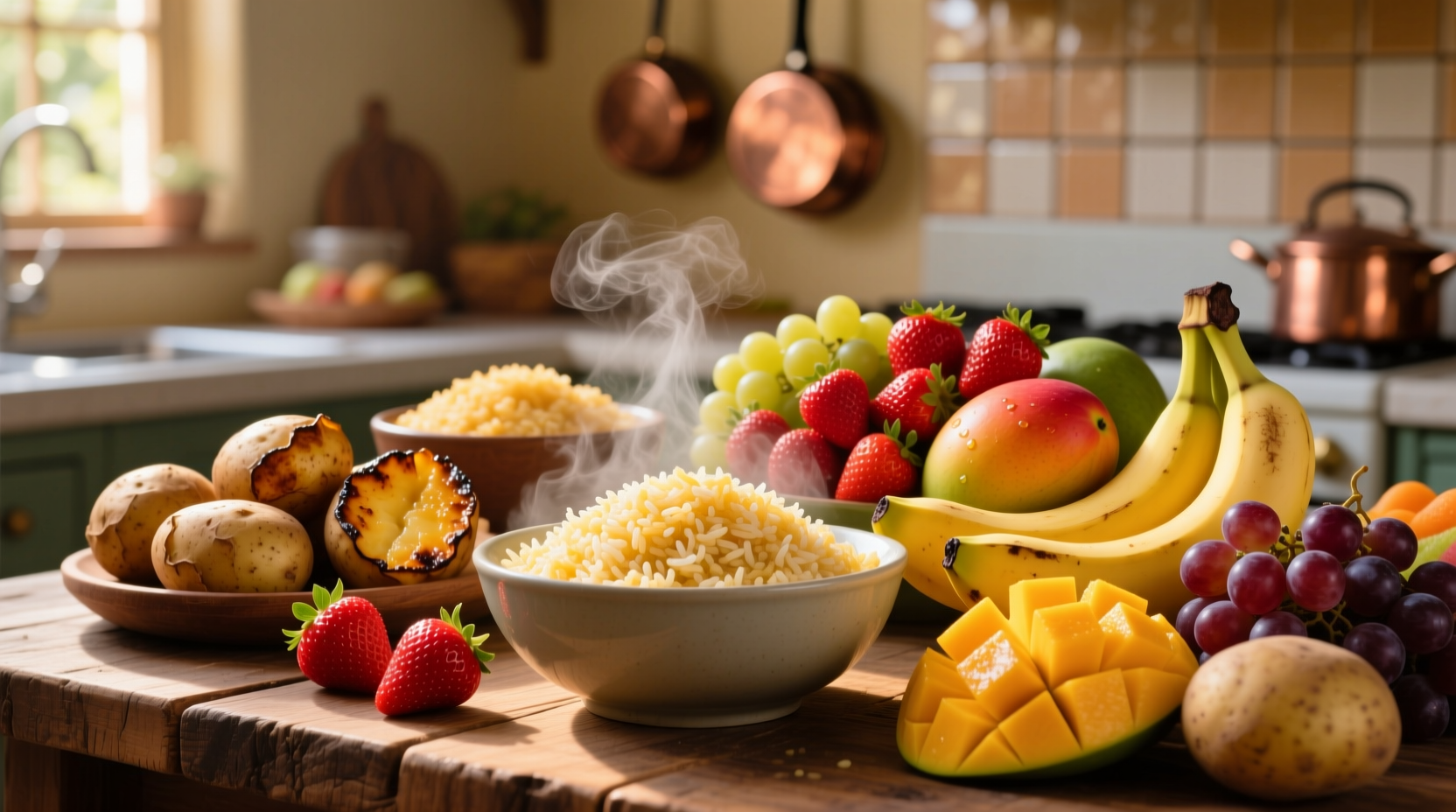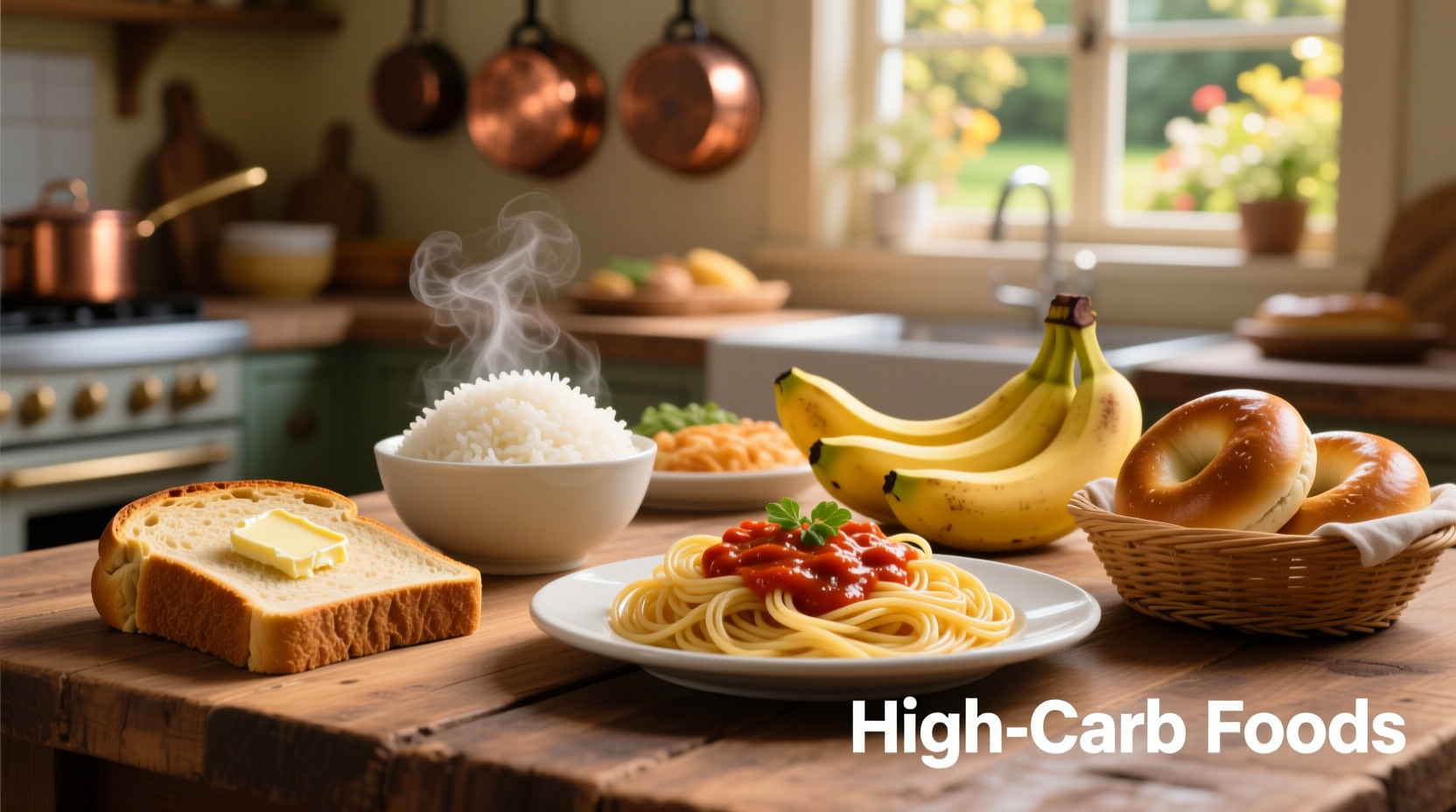If you're searching for what food has high carbs, the top categories include grains (like rice and wheat), starchy vegetables (potatoes and corn), legumes (beans and lentils), fruits (bananas and mangoes), and sugary processed foods. A single cup of cooked white rice contains approximately 45 grams of carbohydrates, while a medium banana has about 27 grams. Understanding which foods are high in carbs is essential for managing blood sugar levels, following specific diets like keto, or fueling athletic performance.
Carbohydrates are your body's primary energy source, but not all high-carb foods affect your system the same way. As a culinary professional with expertise in food chemistry, I've analyzed how different carbohydrate sources interact with our metabolism. Whether you're monitoring your intake for health reasons or optimizing your nutrition for performance, knowing exactly which foods contain the most carbs helps you make informed dietary choices.
Understanding Carbohydrate Content in Foods
Carbohydrates exist in three main forms: sugars, starches, and fiber. When evaluating high carbohydrate foods list options, it's crucial to distinguish between complex carbs (found in whole grains and vegetables) that provide sustained energy, and simple sugars that cause rapid blood sugar spikes. The total carbohydrate content listed on nutrition labels includes all three forms, but "net carbs" (total carbs minus fiber) matter most for certain dietary approaches like keto.
Top High-Carb Food Categories
Grains and Starchy Staples
Grains form the foundation of many diets worldwide and represent some of the most concentrated sources of carbohydrates. A single slice of white bread typically contains 15 grams of carbs, while a standard serving of pasta (1 cup cooked) delivers 40-45 grams. Traditional staples like couscous, quinoa, and bulgur offer similar carb density with varying nutritional profiles.
Fruits: Nature's Sweet Carbohydrate Sources
Fruits contain natural sugars along with valuable vitamins and fiber. While all fruits contain carbs, some stand out for their higher concentrations. Bananas, mangoes, grapes, and pineapples rank among the fruits highest in carbohydrates. For example, one cup of grapes contains approximately 27 grams of carbs, making them a quick energy source but potentially problematic for strict low-carb diets.
| Food Item | Serving Size | Total Carbs (g) | Fiber (g) | Net Carbs (g) |
|---|---|---|---|---|
| White rice (cooked) | 1 cup | 45 | 0.6 | 44.4 |
| Sweet potato | 1 medium | 27 | 4 | 23 |
| Whole wheat bread | 1 slice | 12 | 2 | 10 |
| Apple | 1 medium | 25 | 4.4 | 20.6 |
| Black beans (cooked) | 1/2 cup | 20 | 7.5 | 12.5 |
This comparison of carbohydrate content in common foods illustrates how serving size dramatically impacts total carb intake. The USDA FoodData Central database (fdc.nal.usda.gov) provides these standardized measurements that help consumers make accurate dietary calculations. Notice how fiber content varies significantly between similar carb counts, affecting the net carb value that matters for certain dietary approaches.
Context Matters: When High-Carb Foods Benefit Your Diet
Understanding the healthy high carbohydrate foods versus those with less nutritional value requires considering your specific health goals and metabolic needs. For endurance athletes, high-carb foods serve as essential fuel sources before, during, and after intense activity. The American Diabetes Association (diabetes.org) notes that complex carbohydrates from whole foods provide sustained energy without the dramatic blood sugar spikes associated with refined carbs.
However, for individuals managing insulin resistance or following ketogenic diets, even seemingly healthy high-carb options like sweet potatoes or quinoa may need limitation. This represents an important boundary condition: the same food can be beneficial for one person while problematic for another, depending on individual metabolic responses and dietary objectives.

Processed Foods: Hidden Carb Sources
Many processed foods contain unexpectedly high carbohydrate levels that often surprise consumers tracking their intake. Salad dressings, sauces, and even "healthy" snacks can pack significant carbs through added sugars and starches. A single serving of barbecue sauce typically contains 15-20 grams of carbohydrates, while flavored yogurt can reach 30+ grams per container.
Practical Guidance for Managing Carb Intake
When incorporating high carb foods for athletes or managing carb intake for health reasons, consider these evidence-based strategies:
- Pair carbs with protein and fat to slow digestion and minimize blood sugar spikes
- Choose whole food sources over processed options for better nutrient density
- Time your carb consumption around physical activity for optimal energy utilization
- Read labels carefully to identify hidden carbohydrate sources in processed foods
Research from the Mayo Clinic (mayoclinic.org) shows that combining high-carb foods with healthy fats and proteins creates more stable blood sugar responses than consuming carbs alone. This approach works particularly well for individuals with prediabetes or insulin resistance who don't need to eliminate carbs entirely but should manage their quality and timing.
Key Takeaways for Informed Dietary Choices
Knowing exactly which foods contain the most carbs empowers you to make dietary decisions aligned with your health goals. Rather than viewing all high-carb foods as problematic, focus on selecting nutrient-dense options that provide additional benefits beyond just carbohydrates. Whole grains, legumes, and certain fruits offer valuable fiber, vitamins, and minerals alongside their carb content.
Remember that individual responses to carbohydrates vary significantly. What works for one person's metabolism might not work for another's, making personalized approaches more effective than rigid universal guidelines. Monitoring your body's response to different carb sources through methods like glucose tracking can provide valuable insights for optimizing your dietary pattern.
Which fruit has the highest carbohydrate content?
Mangoes and bananas contain among the highest carbohydrate levels in fruits, with a medium banana providing approximately 27 grams of carbs and one cup of mango offering about 25 grams. Dried fruits like raisins are even more concentrated, with 115 grams of carbs per cup due to water removal during processing.
Are all high-carb foods unhealthy?
No, many high-carb foods are extremely nutritious. Legumes, whole grains, and starchy vegetables provide essential nutrients, fiber, and sustained energy. The key distinction lies between nutrient-dense high-carb foods and those offering mostly empty calories with added sugars and refined grains.
How many carbs should I eat daily?
Daily carb needs vary based on individual factors including activity level, health status, and goals. The Dietary Guidelines for Americans recommend 45-65% of daily calories from carbs, which translates to 225-325 grams for a 2,000-calorie diet. Those following low-carb diets may consume 20-130 grams daily, while endurance athletes might require 300+ grams.
What are the healthiest high-carb food options?
The healthiest high-carb foods include legumes (beans, lentils), whole grains (oats, quinoa), starchy vegetables (sweet potatoes, squash), and certain fruits (berries, apples). These provide complex carbohydrates along with fiber, vitamins, minerals, and phytonutrients that support overall health.
Can I eat high-carb foods on a weight loss diet?
Yes, you can include high-carb foods in a weight loss diet by focusing on portion control and choosing nutrient-dense options. Research shows that diets emphasizing whole food carbohydrates with adequate fiber can support sustainable weight loss better than severely restricted carb approaches for many people.











 浙公网安备
33010002000092号
浙公网安备
33010002000092号 浙B2-20120091-4
浙B2-20120091-4